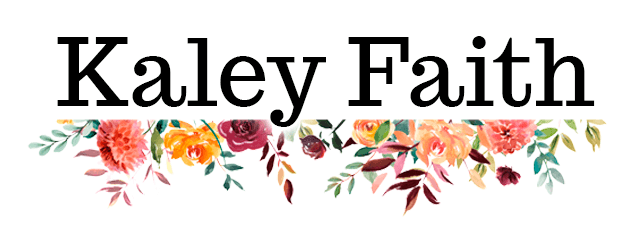
27 Sep The 30-Day MCOT Heart Monitor (For POTS)
When my postural orthostatic tachycardia syndrome (POTS) first started escalating, the most concerning symptoms included things like chest pain, palpitations (like my heart was flopping), and tachycardia (racing heart). Not knowing what was happening, my doctor ordered an echocardiogram, which is an ultrasound of the heart, as well as a 2-day heart monitor (called a Holter monitor), that works kind of like a portable EKG machine ensuring the electrical components of the heart are working well. During the 48-hour study, there was nothing significant to note other than confirmation that my heart indeed goes faster than normal during standard life activities such as walking or standing. Further testing pointed to the fact that I did indeed meet the criteria for POTS.
About 6 months later, my heart-related symptoms seemed to be getting more prominent and concerning – short bursts of racing heart, several palpitations in a row, and chest pain of greater intensity were all things I was experiencing. During one episode, a friend put their Apple watch on my wrist and did the EKG function. The watch promptly alerted me that atrial fibrillation had been detected (which is a type of arrhythmia, or abnormal heartbeat). After discussing my symptoms with my cardiologist, he ordered a 30-day MCOT study to rule out problems apart from POTS.
Before the test, I found myself googling “Tips for wearing the MCOT” and “What is the 30-day heart monitor like?”, and so if that’s you, welcome. For me, the test was easy, non-invasive, and brought comfort to my heart-related concerns. Here are some things I learned along the way:
Shower with care
The patch/transmitter is basically a big sticker that you attach to your chest, with electrodes embedded and a little electronic transmitter attached on top. It is water resistant, but not waterproof, so showering with care is a must. You will periodically have to take the transmitter off and charge it, and I was often tempted to shower while I did not have the patch on for ease, and to let my skin have a break. But that said, showering is one activity that nearly ALWAYS precipitates symptoms for me, and so I decided I wanted to be sure it caught anything during those times.
I found it easiest to throw a hand towel over my shoulder, and let it hang over the patch to protect it from direct streams of water. Interestingly, I found that the warm/wet towel served to solidify the seal around the patch, and increased the longevity of the adhesive. It seemed counterintuitive, but even after freshly replacing the sticky part of the patch, showering helped seal it to my skin for a longer-lasting stick.
Keep the monitor close
There are two main parts of the MCOT – the patch/transmitter that sticks to your chest, and the “monitor” that allows you to record events and receive alerts. The monitor is basically a smartphone with these few specific capabilities, and they encourage you to keep it within 30 feet at all times. During the day, keeping the monitor ON YOU is very important. If you notice your heart start flopping, you should immediately hit the “record event” button. In addition, if you have a serious heart problem that needs prompt attention, the monitor will let you know. I found it easiest to wear a little pouch, similar to a fanny pack or hip purse, so that no matter where I went I always had it on me regardless of my pocket, purse, or backpack situation.
At night, I found it to be even more important to keep close by, not only because of recording events but also because it oftentimes would alert me to the fact that my sleeping position had interrupted the electrical connection of the electrodes (more on that in a minute), or that it had lost cellular connection. Every alert caused a very bright, very loud chime, and it was helpful to have it within reach so that I did not have to get up from lying down (which would cause acute POTS symptoms).
I’m not sure if it was due to living in an area with poor cell coverage, but I got frequent nighttime interruptions letting me know the monitor was not getting service. After several nights of interrupted sleep, I began putting it on airpane mode. I do not necessarily recommend this, especially if there is concern about emergency situations and heart rhythms, but it is what I ended up doing for sanity’s sake. Also keep in mind that the monitor needs to charge which is easiest at night, so pick an outlet near you bed or use a long charging cord.
Find a good position to sleep in
I’m not sure about you, but I am a side sleeper. Unfortunately, over the course of the test, I found that I frequently interrupted the connection between the electrodes because of the concave shape of my shoulders which would shift my skin and the patch. Because the patch itself is on the left side, it was naturally easier to sleep on the right. I also found that gently hugging a pillow or blanket helped keep it in place. Sleeping on my back was also helpful, but not always comfortable.
Move the patch slightly each time you replace it
Every five days, the adhesive in the patch needs to be replaced. For some, the adhesive can cause significant irritation (so they do send along special electrodes), and for others, there is no problem. My skin did not react to the adhesive, but the pure fact of wearing a sticker for 30 days causes some level of skin fatigue. Even on the first replacement patch, I found it helpful to slightly adjust the placement, and to continue to pick a different spot each time. It helped give small portions of my skin time to heal and refresh before the next five-day swap. Remember to be gentle with the patch, even if it itches. Gently pressing or softly rubbing the adhesive and electrodes can help relieve some of the occasional frustration, but again, be gentle.
Summary
The test as a whole brought great comfort. Knowing that every skipped beat, flop in the chest, or bout of chest pain was being recorded and looked at was huge in helping me understand how POTS impacts my physical heart sensations. Over the 30 days, I noted about 70 distressing “events,” and the final report looked carefully at each one. They discovered nearly 8,000 palpitations (called PVCs), plenty of tachycardia, and some bradycardia, but thankfully, no serious arrhythmias (like the atrial fibrillation we wanted to rule out). Having POTS can sometimes feel like I’m dying, and so having this reassurance has been important in navigating the symptoms that can often feel like an emergency.
By the end of the test, the MCOT patch was kinda my pal and had been with me through thick and thin. Overall the experience was positive and contributed to my treatment goals and care plan, and I hope your own experience is as clarifying and beneficial to your health as well.
-
Making a Full Physical Recovery – A Day-by-Day Miracle
“You should exercise more.” A brutal statement. One I had tried to fulfill on my own, and time and time again, had failed. It was a frustrating piece of advice from my doctor, and felt so out of reach as I navigated my bouquet of chronic illnesses....
27 June, 2024 No comment -
Awesome Recovery News!! And Why I No Longer Plan To Write About My Symptoms
I am so excited to report that after graduating from the 3-week Pain/Symptom Rehabilitation Center at Mayo Clinic in Rochester and continuing the program at home, I am nearly 100% recovered!...
05 March, 2024 3 Comments -
What is the Valsalva Maneuver like?
The Valsalva maneuver is EASILY the most fascinating thing I’ve gotten to do in this entire medical adventure. On the surface, it’s a fairly quick and easy part of autonomic testing, but underneath, it’s one of the coolest and most complicated mechanisms of the human body that I’ve encountered. ...
17 January, 2024 3 Comments






No Comments